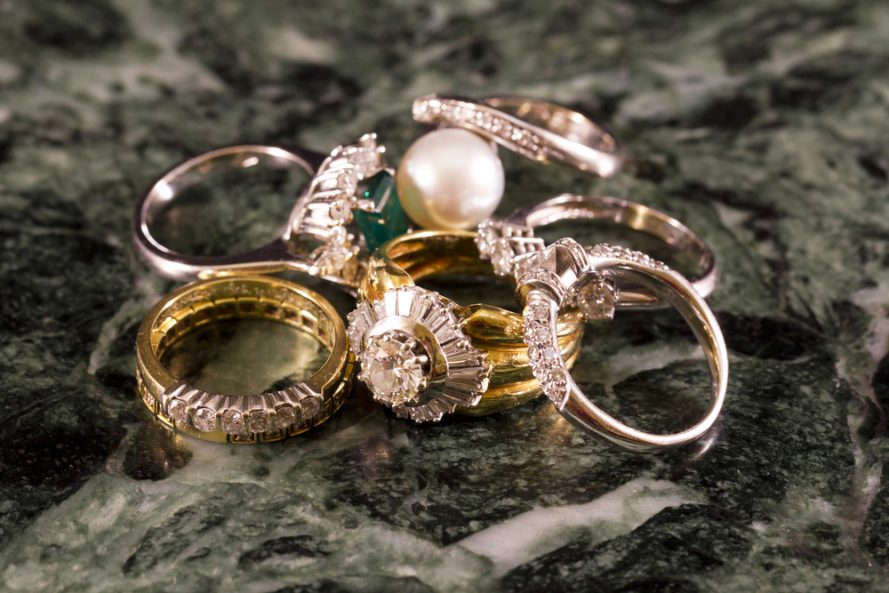Many people are uncertain about what the differences in gold color means and how it affects the value of their jewelry. To make things more complicated, we also find the different karat ratings that vary from 10 to 24 karats. But what do all these different ratings and colors tell us about the value of our precious metals? Let’s take a closer look.
In almost any type of jewelry setting, you’ll find gold between 10 to 18 karats. Higher karat ratings indicate higher gold purity and subsequently, a higher value. For example, 18 karat gold contains higher gold purity at 75%, with 25% containing a mixture of alloys. 24 karat gold is the purist you’ll find with a 100% pure gold rating.
Alloys are used to harden gold since the purer the gold, the softer your jewelry will be. While the value of jewelry is indeed influenced by its karat rating, soft gold is prone to damage from wear over time, which makes it necessary to mix gold with alloys in order to make durable jewelry.
Here’s a look at three of the most common types of gold color variations:
White gold

White gold is alloyed with silver and nickel to give it its appearance. Over time, it does tend to turn yellow but this can be remedied by having your jewelry polished and rhodium plated. As a gold color, white is often seen as the more ‘modern’ or trendy type of gold, but it is far from a new invention. In fact, it dates back to the 19th century when palladium was used to create the metal.
When it started to grow in popularity in the 1920’s, it was seen as an affordable alternative to platinum. White gold will have different hardness and ductility depending on how it has been alloyed with the other metals.
Yellow gold

Yellow gold is the most popular and the most common gold color you’ll find. In fact, all gold starts as pure yellow in color. White and rose gold get their color based on the combinations of alloys that are used to harden them. Yellow gold is typically mixed with silver, copper and a small quantity of the alloy known as zinc.
Rose gold

Gold color of the rose variation is alloyed with copper to give the gold its beautiful rosey-pink color, The reddish color will depend on the combinations of copper and gold that are used. 18 karat rose gold generally consists of 75% gold and 25% copper.
A rainbow of gold
Most people are familiar with yellow gold, rose gold and white gold, but there are also a number of other gold colorings. Jewelers are able to achieve a pale grey gold by alloying gold with iron and silver. Green gold is created with different combinations of silver, zinc and copper. Blue gold is much less common in jewelry but it can be created by adding arsenic or iron to gold.
Even lesser known gold hues are purple and black gold. To create purple gold, 20% aluminum is alloyed with 80% gold and black gold is created by alloying 25% cobalt and 75% gold.
Selling your gold jewelry
Selling your gold jewelry needs to be given careful consideration. Without the proper research, a transparent appraisal and a clear idea of the value of your jewelry, you could be settling for much less than your gold is worth. It’s not uncommon for rogue gold buyers to underpay clients, which is why a thorough appraisal is worth your time and effort.
Tip: If you have antique gold jewelry, ascertain whether the piece is more valuable intact or if you’ll get better value if it were refined. A jeweler will be able to use a scale to weigh the piece and subtract the weight of any gems or stones to determine the net weight of the gold that you are interested in selling.

At Ross & Simons, we make selling jewelry simpler than ever before. All you need to do is gather your old, broken or unwanted gold and ship it to us (insured for free) before receiving your money in as little as 24 hours. We pay the most competitive rates for your gold regardless of how much or little you send us. Find out more about selling your gold to us now.



